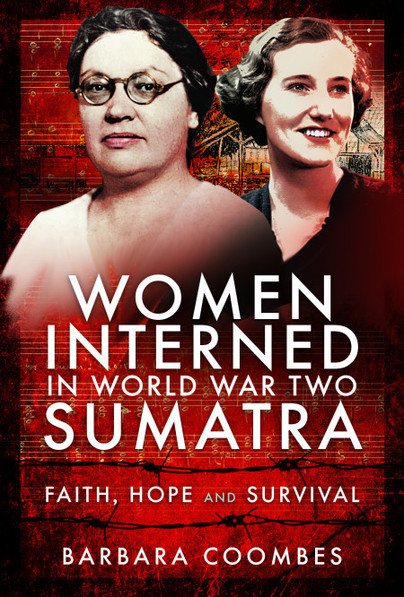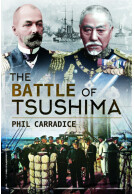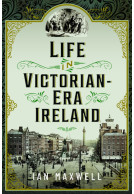Women Interned in World War Two Sumatra (eBook)
Faith, Hope and Survival
Imprint: Pen & Sword History
File Size: 22.7 MB (.epub)
Pages: 272
Illustrations: 40 black and white illustrations
ISBN: 9781526787767
Published: 6th July 2022
| Other formats available - Buy the Hardback and get the eBook for £1.99! | Price |
|---|---|
| Women Interned in World War Two… Hardback Add to Basket | £25.00 |
Thousands of women and children were among those who struggled to leave Singapore just before capitulation on February 15 1942; their hope was to reach safety. For many that hope was never realised; countless numbers drowned as ships were bombed and sunk on their way to ‘safety’. The ‘lucky’ ones who survived the onslaught of the ships would become guests of the Japanese; many of these would not live to see the end of the war.
Two very different women fleeing on those last ships and subsequently interned in camps throughout Sumatra were Margaret Dryburgh, a missionary and teacher, and Shelagh Brown, a secretary at the Singapore Naval Base. Their paths crossed briefly prior to the catastrophic events of 1942 and met again in internment. The ‘Captives Hymn’ composed by Margaret Dryburgh was initially sung by herself along with Shelagh Brown and friend Dorothy MacLeod on 5 July 1942. It has since been sung at services throughout internment and continues to be sung at services all over the world. Music and faith were fundamental to both their lives and Margaret’s creative talents lifted the spirits of everyone during those dark and difficult days.
In a remarkable partnership, when the women were struggling to find something new that would lift their flagging spirits, Margaret and fellow internee Norah Chambers produced a ‘Vocal Orchestra’ using women’s voices in place of instruments. The first performance stunned the entire camp; they had never heard anything so beautiful and momentarily made them feel that they were free and floating away with the music.
This true account, using personal diaries and family documents traces Margaret Dryburgh and Shelagh Brown’s journey from childhood through to adulthood and internment. Early life shapes adult life and perhaps contributed to their response to captivity which showed courage, tenacity, perseverance and surprisingly, given the appalling conditions, a good deal of humour.
‘May the Day of Freedom Dawn’
As featured in.
CoFEPoW Quarterly Oct 2022
Coombes’s book further honors the memories of these brave women and tells a narrative that has not been a traditional part of World War II history.
Asian Review of Books
Read the full review here
As featured in
Waterside Magazine
I found this book/story to be quite a moving
The History Fella
one, and if you want to learn what life is like as a prisoner in a camp in a foreign country, this book is certainly up there with the best of them. It has
certainly been quite a moving book to read.
Read the Full Review Here
"Through writing this book Coombes encourages us not to forget about these amazing women."
Who Do You Think You Are? - Issue 196, October 2022
"Readers will certainly pause to wipe away a tear or two since this extraordinary story is true."
ARGunners.com
Women interned in World War Two, gives an insight into the dark days in 1941/42 The Royal Navy rescued
Richard Gough - Historian, writer, author of the Escape from Singapore, The jungle was Red, Outpost of the Empire, SOE Singapore 1941-42. Waiting publication Tony Poe, CIA Paramilitary in SE Asia.
the British Army trapped in Norway, swiftly followed the debacle of Dunkirk but little public attention was drawn to
the loss of the garrison in Singapore, where close to 90,000 soldiers surrounded to the Japanese. Singapore was different,
while attention was drawn to the military loss, Malaya and Singapore was part of the British Empire with large business interest
and British staff and families.
The author, Barbara Combes, describes when the Japanese army crossed the Siamese border into Malaya it swept British and Asian families south towards Singapore, which was completely unprepared for the influx of British families. The exodus of refuges increased as towns and Kuala Lumper emptied, and the long column of vehicles filled the road.. All ships in Singapore took a quota of passengers. As the ships fled Singapore, they were sunk be waiting, Japanese bombers, or out blown out the water by the Japanese invasion fleet. Many drowned.
Survivors were washed up on desert islands and Sumatra. discovered by the Japanese, many were bayonetted, others herded in prison camps. Barbara Coombes Using personal diaries of survivors and family documents describes the scene at Singapore docks crowded with civilians and military sort a berth on ships. the chaos on the docks, the bombing and surviving in the prison camps.
A page turner which gives the reader a glimpse of the days when Britain began to lose its Empire.
5/5
Army Rumour Service (ARRSE)
As featured on Army Rumour Service
The stories of the female civilians who were interned by the Japanese in the Second World War is one that may have been made familiar to many of us through the tv series Tenko, but here Barbara Coombes has focused on two of these women and brought them to life in a way that will live long in the memory.
Professor Angela Smith, The University of Sunderland
The book starts with the terrifyingly immediate personal accounts of the civilians’ attempts to escape from Singapore in February 1942. Having believed the myth that Singapore was impregnable, by the time arrangements were made to evacuate, it was too late for thousands of European and Australian civilians. Coombes introduces us to the two main protagonists: Christian missionary Margaret Dryburgh and Singapore-born Shelagh Brown, who was 25 when interned. We are made familiar with their lives before internment, from Margaret’s early life in the North-East of England to her years as a teacher and missionary in China and then Singapore. In Shelagh’s case, it is a more traditional colonial upbringing that involves family split between Britain and Singapore. The women are just two of the thousands who were captured at the fall of Singapore, and we follow them on a journey through unimaginable conditions in various internment camps where starvation and disease sap the strength of even the most resolute. These trials are illuminated by snatches of diary entries, poetry and music that the women managed to write down during their time in the camps. Through this, we can see Margaret and Shelagh’s Christian faith tested but found to hold and sustain them through the most unbelievable physical and mental hardships.
By focusing primarily on these two women, Coombes is able to provide us with a coherent picture of the conditions in the camps, and more importantly, an understanding of just how the women coped. The indomitable spirit of these women comes shining off the page, largely through their own words as reproduced here. Margaret’s ability to record in her diary the inhuman treatment they endured, then finish the entry by mentioning a glorious sunset is typical. The book is a gripping tale of human endurance and survival that deserves a wide readership.
Article: 'A story of courage and much loved hymn'
Sunderland Echo
About Barbara Coombes
Barbara studied at Chichester University as a mature student for a BA [Hons] in Humanities and subsequently secured a post as a lecturer at Chichester College of Further Education teaching mature students. Leaving to follow her passion of Women’s History she completed a MA by research in Modern British Women’s History at London Metropolitan University in 2010. Following research carried out on the MA in relation to women’s internment in the Far East her time has been divided between research for this work in Singapore and the UK alongside various projects, concerts and talks on this extraordinary story.















